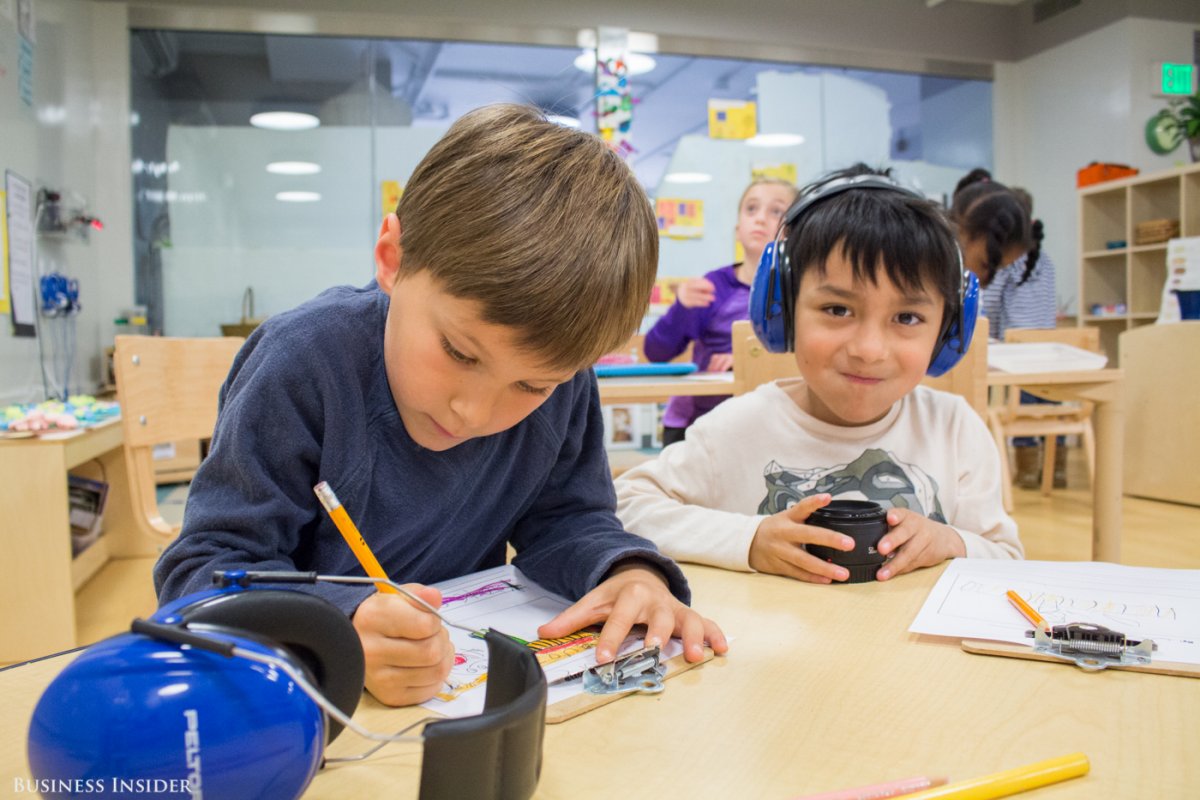From DSC:
I don’t care for the title here, but there are some valuable items that can be found by digging around in this article entitled, “Silicon Valley billionaires are appalled by normal schools — so they’ve created this new one” — from businessinsider.com by Melia Robinson
Excerpts:
A typical day at Altschool, the Bay Area-based school system that raised $100 million in venture capital in May, is anything but typical.
Kids take attendance on an iPad, complete a “playlist” of activities, and learn 3D modeling software to design a playhouse for the class pet.
Founder and CEO Max Ventilla previously helmed the personalization team at Google, where he helped build Google+ and other products that make the internet feel more personal.
His latest venture aims to transform the outdated, early-1900s model of elementary education for the digital age.
In May, we spent the day at AltSchool‘s Fort Mason location in San Francisco to see its revolutionary teaching style in action.
From DSC:
Is there anything here that public schools would find attractive and/or could implement?
- AltSchool divides students between the ages of 4 and 14 into three groups: lower elementary, upper elementary, and middle school. There are no traditional grade levels.
- A typical day at AltSchool begins with attendance. As kids arrive, they sign in to the school’s attendance app on a dedicated iPad.
- The attendance app is one of a dozen or so tech tools developed by the school’s 50-person product team, which includes former employees of Apple, Uber, Zynga, and Ventilla’s alma mater, Google.
- The PLP is the foundation of the AltSchool experience. Teachers collaborate with families and students to design a set of goals for the learner based on the student’s interests, passions, strengths, and weaknesses.
- Each child receives a weekly “playlist” of individual and group activities that are aimed at achieving those goals. This student is writing an entry for his blog on coin collecting.
- Teachers pick activities for their students by creating items in their playlists or searching the My.AltSchool library to find items that other teachers have made.
- This 8-year-old demonstrates a game of Pac-Man using MaKey MaKey — a simple circuit board that transforms everyday objects into touchable user interfaces …he attaches alligator clips to four mounds of clay and tapes one clip to himself. When he taps the clay and completes the circuit, the computer interprets the input as arrow key actions.
- This streamlined instruction time frees up the teacher to walk around the classroom and interact face-to-face with students.
- The lower elementary students spend the morning knocking a shared item off their playlists: “writing the news.” These guys are chronicling a recent trip to the park.
- Many of the younger kids wear headphones during playlist time to drown out distractions.
- Technology isn’t necessary to complete all activities, but it is used to document students’ work. This student takes a picture of her news clipping using an iPad and uploads the image to her playlist.
- The classroom, like the tech, fosters AltSchool’s individualized learning approach. Students sprawl across the room on carpets, beanbags, and even lofts of their own construction.
- Classrooms are treated like stations, rather than designated areas for particular grade levels, and students move from room to room throughout the day. It’s especially important for micro-schools to maximize space so that a four-room schoolhouse doesn’t feel cramped
- Craft and cleaning supplies are stored where the smaller kids can reach them, giving them a sense of agency.
- After lunch and PE in the nearby park, students put aside their playlists and work on more integrated group projects.
- The middle-school students were tasked with a classroom redesign. This 11-year-old, who was wearing an Iron Man T-shirt, built a parkour course. He’s writing a parent permission slip on his Google Chromebook now.
- His classmate learned from online tutorials how to use the 3D-modeling software SketchUp, and she designed an urban-garden-inspired seating area for the unused deck on the second floor. There’s an obstacle course inside the benches for a class rabbit to tunnel through.
- Another student, who wants to be a veterinarian, lawyer, writer, and manga comic-book writer, grew an indoor tea garden. She says she loves how the assignments “bend to your ability.”
- If Silicon Valley’s favorite elementary school has its way, personalization will remain king.










